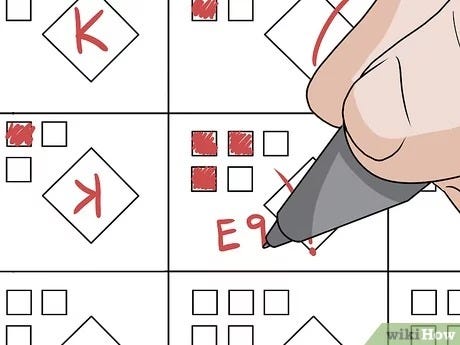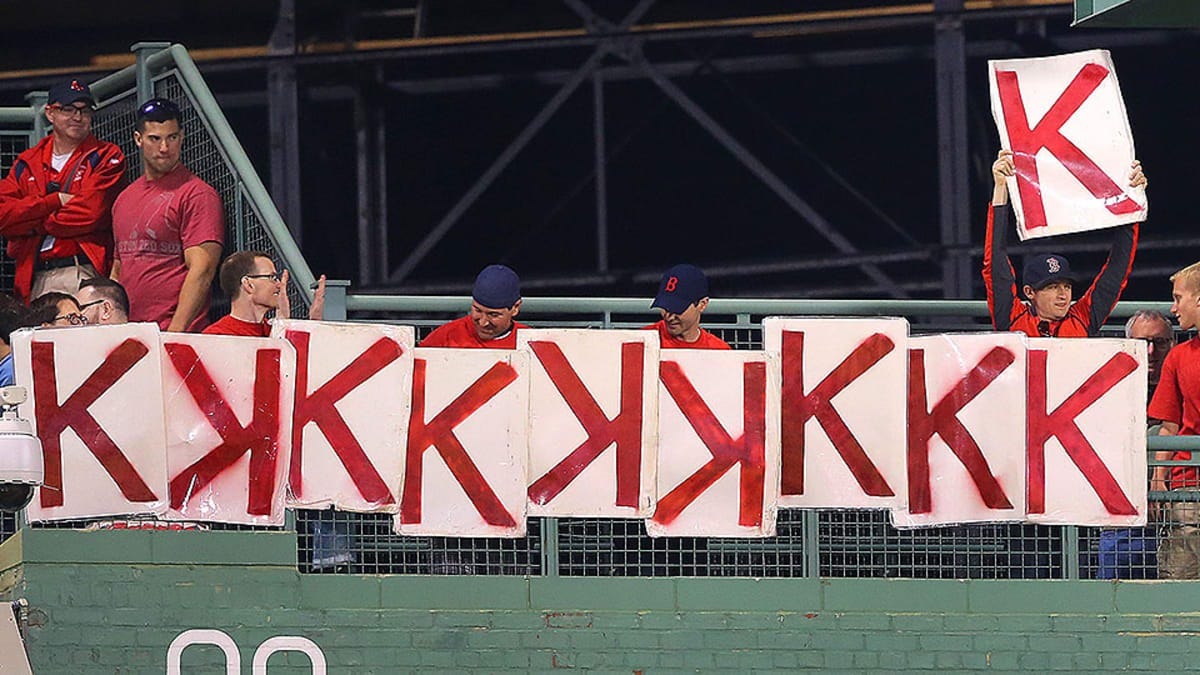What is a Backwards K in Baseball?

It is no secret that baseball fans love two things, stats and abbreviations. The K is one of the most famous abbreviations in baseball, used to record a strikeout in the scorebook. Scoring in baseball has an interesting history and is a language all to itself.
When scoring, the space on the scorecard is limited and the game moves quickly. Therefore, the scorekeeper must use a form of shorthand to keep track of what happens without missing any action. This is where the K comes into play. By recording a K, the scorekeeper can quickly note that a player has struck out.
With one simple letter, the scorekeeper can go into more detail. A regular K denotes the fact that the batter has struck out swinging. A backward K means that the batter was called out looking at strike 3.
If you are interested in learning more about states and scoring, check out this article: Baseball Stats You Need to Know
You can also shop our wide variety of baseball gloves here.


Fun Facts about the K in Baseball


Origin: It is thought that New York Yankees scorer Henrey Chadwick was the first scorekeeper to use the K and the backward K in the 1860s. It was first officially used in 1868.
Why a K?: There are three main theories for why the K became the simple for a strikeout. The first is that the K is the prominent letter of the word strike. The second is that the K is drawn with three strokes of a pencil, one for each strike in a strikeout. Finally, the last theory is that the K was the only letter in the work strike that was not already being used as a scoring abbreviation. S=Single, T=Tripple, R=Run, I=Inning, E=Error. Only the K was left.
Backward K Strike Out Slang: Many great baseball slang words reference striking out looking. Here are some of our favorites: Punchout, Rung Up, Caught Looking, Frozen, Thrown a Chair, and Window Shopping.
Backwards K in baseball FAQ
- Do all strikeouts result in a backward K?
- No, the backward K is exclusively used when a batter strikes out looking.
- How did the backward K tradition start in baseball?
- Using a K to abbreviate a strikeout has an unclear origin. Here are three possibilities. The first is that the K is the prominent letter of the word strike. The second is that the K is drawn with three strokes of a pencil, one for each strike in a strikeout. Finally, the last theory is that the K was the only letter in the work strike that was not already being used as a scoring abbreviation. S=Single, T=Tripple, R=Run, I=Inning, E=Error. Only the K was left.
- Is there a difference between a standard K and a backward K in statistical analysis?
- Both the K and the backward K count toward a pitcher’s overall strikeout total. They are separated to provide a more thorough analysis of the type of strikeouts a pitcher gets.
- Can a player argue a called third strike that results in a backward K?
- Yes, a player can argue, but they run the risk of being ejected for arguing called balls and strikes which are up to the judgment of the umpire.








Login and Registration Form
or
Create an account